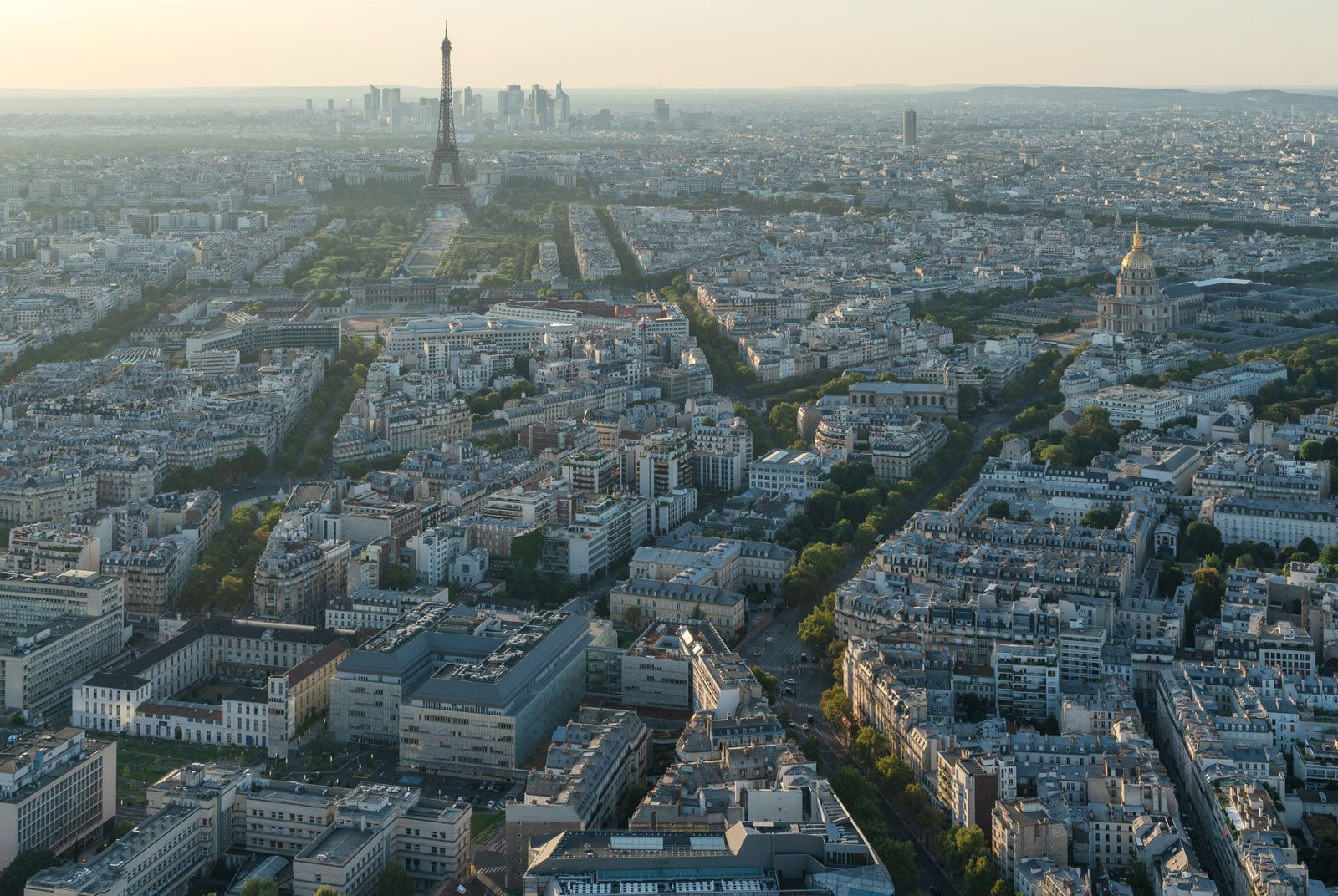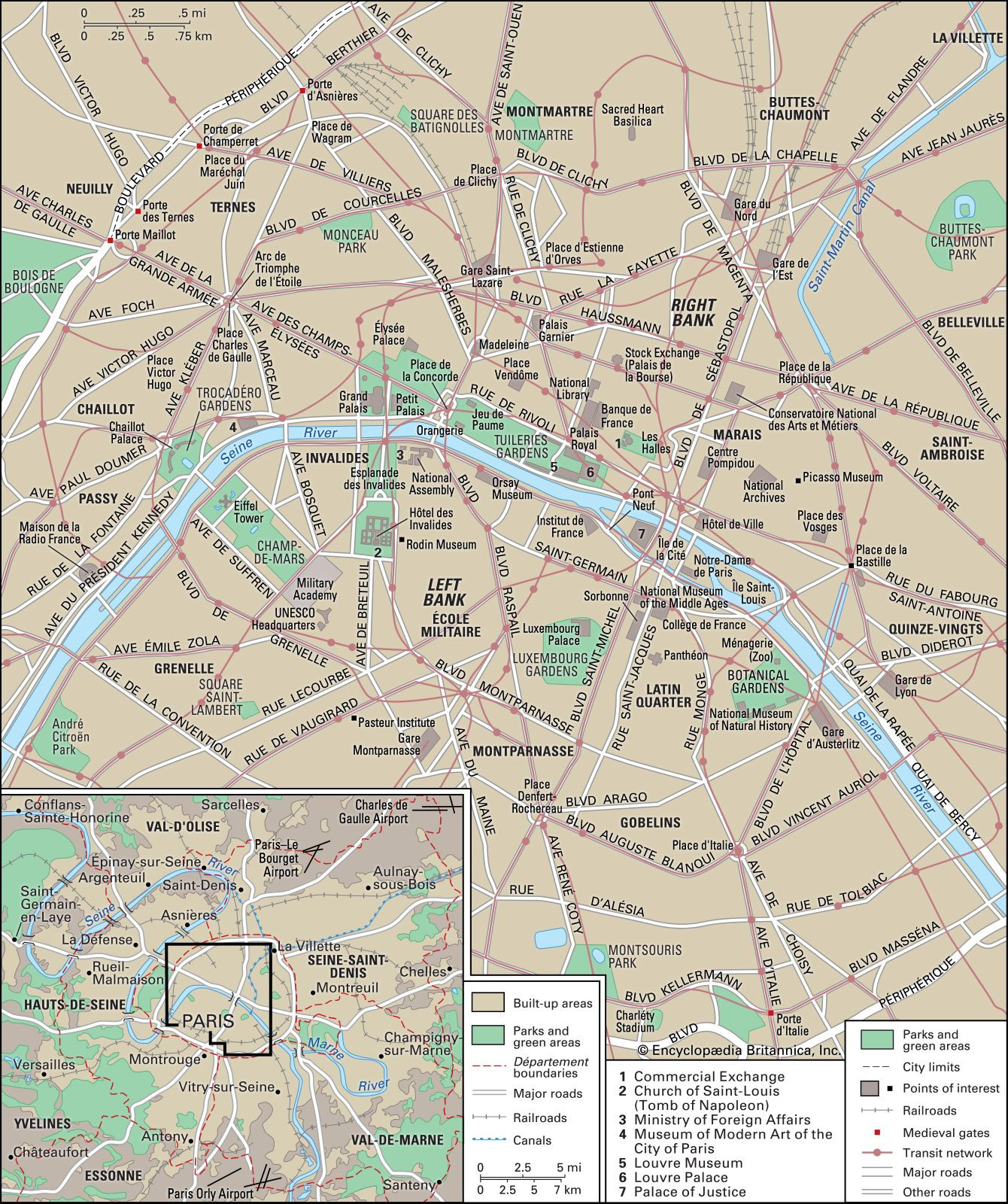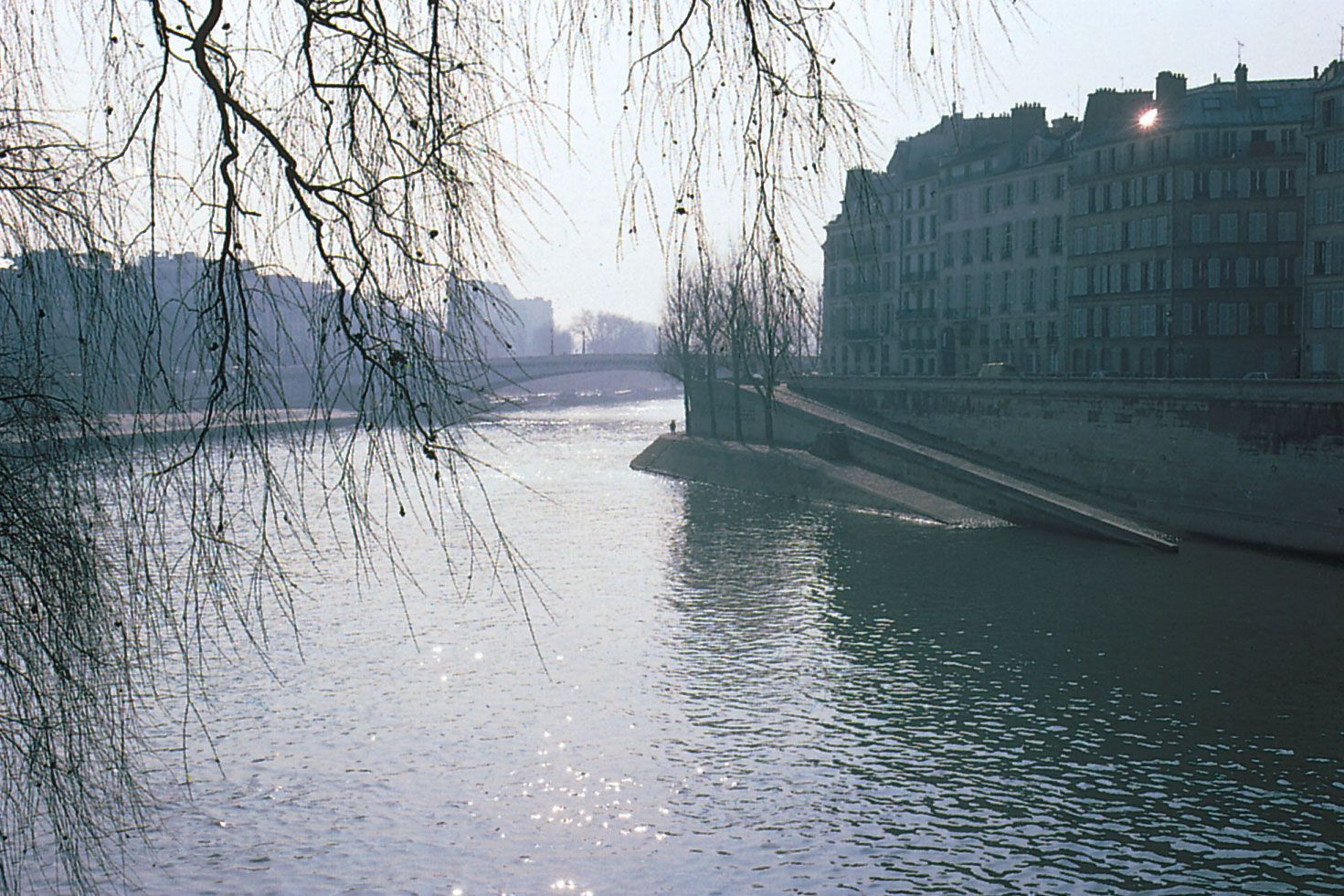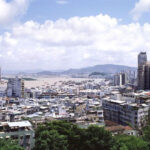Paris, often romanticized and globally recognized, stands as a beacon of culture, history, and charm. But Where Is Paris exactly? Nestled in the north-central part of France, Paris is more than just a city; it’s the vibrant capital at the heart of the Île-de-France region. This strategic location along the Seine River has shaped its destiny as a pivotal European hub for centuries.
Geographically, Paris sits approximately 233 miles (375 km) upstream from where the Seine meets the English Channel. This placement has been crucial to its growth, connecting it both inland and to international waters. From its humble beginnings on the Île de la Cité, an island in the Seine, Paris has expanded outwards, embracing both banks of the river and beyond, becoming a sprawling metropolis yet retaining a uniquely intimate city center.
 Panoramic view of Paris skyline featuring the Eiffel Tower
Panoramic view of Paris skyline featuring the Eiffel Tower
The Geographical Location of Paris in Detail
Paris is not just situated in France; it is intrinsically woven into the very fabric of the nation. Positioned centrally within the Île-de-France region, Paris benefits from a rich agricultural basin, aptly named the Paris Basin. This fertile land has historically supported the city and continues to contribute to France’s agricultural prowess. Administratively, Paris itself constitutes one of the eight départements of the Île-de-France, highlighting its central and significant role within the broader region.
The city’s precise coordinates place it in a geographically advantageous location within Europe. Its accessibility via both land and water routes has been a cornerstone of its development. The Seine River, acting as a natural artery, has facilitated trade and transportation since the city’s inception. This central position has not only bolstered Paris’s economic importance but also cemented its status as a cultural and intellectual capital on a global scale.
Paris’s Landscape and Topography
The landscape of Paris is characterized by a gentle depression carved out by the Seine River. While not dramatically hilly, the topography does vary, contributing to the city’s diverse character. The highest point within the city is the Butte of Montmartre in the north, reaching an elevation of about 430 feet (130 meters). In contrast, the Grenelle area in the southwest lies at a lower elevation of around 85 feet (26 meters). This subtle variation in altitude provides diverse perspectives and viewpoints across the city, most famously from the elevated Sacré-Cœur Basilica atop Montmartre.
Surrounding Paris are extensive forests of beech and oak, often referred to as the “lungs of Paris.” These green spaces play a vital role in air purification for the region, which is heavily industrialized. These forests not only contribute to the environmental health of Paris but also offer Parisians and visitors alike a natural escape from the urban hustle.
 Map of Paris and its surrounding metropolitan area
Map of Paris and its surrounding metropolitan area
The Seine River and Paris’s Urban Layout
The Seine River is undeniably the lifeline of Paris, flowing for approximately 8 miles (13 km) through the city center and touching 10 of its 20 arrondissements. Its course through Paris begins in the southeast, meandering northwestward before gradually turning southwest and eventually exiting at the city’s southwest corner. This winding path effectively divides the city into the famed Right Bank (Rive Droite) and Left Bank (Rive Gauche). Interestingly, due to the river’s curve, what begins as the east bank becomes the north bank and ultimately the west bank as one travels downstream. Parisians, however, simplify navigation by consistently referring to the Right and Left Banks.
Historically, the Seine has shaped the city’s functional divisions. The Île de la Cité, cradled in the river’s embrace, is the historical and spiritual heart of Paris. The Left Bank traditionally became the center of intellectual and artistic life, home to universities and literary cafes. Conversely, the Right Bank evolved into the economic and commercial hub. While these distinctions have blurred over time, they still resonate in the character of each area.
The riverbanks themselves are a defining feature of Paris. Cobblestone quays, often lined with trees, run alongside the river, offering picturesque promenades. Below street level, these quays were historically crucial for commerce, with iron rings still visible on the retaining walls, remnants of mooring for merchant vessels. These walls and quays add a layer of historical depth and visual charm to the Seine’s presence in Paris.
 Aerial view of the Seine River flowing through Paris, showcasing Île Saint-Louis
Aerial view of the Seine River flowing through Paris, showcasing Île Saint-Louis
Paris: A City of Districts and Green Spaces
Paris is administratively divided into 20 arrondissements, each with its own distinct character and local governance. These districts are numbered in a spiral pattern starting from the city center and moving outwards in a clockwise direction, resembling a snail shell. Parisians commonly identify locations by arrondissement number, a testament to the importance of these districts in city life.
Despite being a major urban center, Paris is remarkably endowed with green spaces. Parks, gardens, and squares are scattered throughout the city, providing residents and visitors with vital respites from the urban environment. Many of the central parks and gardens were once royal lands on the city’s outskirts, later transformed into public spaces. Inspired by London’s parks, Napoleon III initiated the creation of large “English-style” parks, such as the Bois de Boulogne and Bois de Vincennes, on the western and eastern edges of Paris respectively. More recently, initiatives continue to expand and enhance green spaces within the city, including innovative projects like the Promenade Plantée, an elevated park built on a former railway line, demonstrating Paris’s ongoing commitment to blending urban life with nature.
Conclusion: Paris’s Enduring Allure and Strategic Location
In conclusion, Paris is located in the north-central part of France, strategically positioned on the Seine River within the Île-de-France region. Its geographical advantages have been instrumental in shaping its history and development into a world-renowned capital. From its landscape and the vital role of the Seine to its urban structure of arrondissements and green spaces, Paris offers a rich tapestry of experiences within a uniquely defined location. Understanding where Paris is geographically is key to appreciating its central role in French and European history, culture, and its enduring appeal as a global destination.

